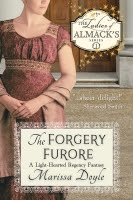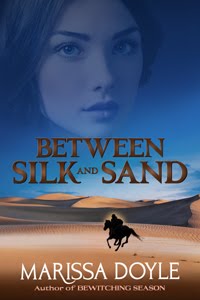Please join me in
welcoming prolific author Jo Ann Brown to Nineteenteen. I have the highest respect for Jo Ann, from
her impressive list of publications (more than 100 books across her pen
names!), to her wonderful stories, to her impeccable research. Her March book, A Bride for the Baron, is the third in her delightful Sanctuary
Bay series for Love Inspired Historical, all set along the Yorkshire coast in
the early nineteenth century. And what
Jo Ann learned about the coast of England just might surprise you!
Smugglers were a vital part
of British commerce in the early nineteenth century...just an illegal part of
it. Readers (and authors) love smugglers in a novel. Sometimes as good guys.
Sometimes as villains. Perhaps it is the allure of a moonless night with the
heroine standing on a craggy cliff, gazing out to sea.
In reality, smuggling was an
industry that stretched far inland as illegal wares were transported throughout
Britain. Smuggled goods were any that had been brought into the country without
tax/duty being paid. The primary concern during the early 19th century was
excise tax, because that was by law set aside to pay for England’s wars. There
was a customs tax as well that could be placed on items going in and out of the
country. Obviously if a shipper avoided paying the taxes, there would be more
profit on the shipment. Some commodities were simply illegal to bring into the
country during the Napoleonic wars, including many French products that the ton
adored like brandy and silk fabrics and ribbons like the ones in this bonnet.
 The smugglers depended on a
vast network. Ships were needed for sailing to the Continent to collect the
goods. Even during the wars with Napoleon, English smugglers could be found in
every French port. The smugglers also acted as an underground system for spies
on both sides of the conflict by transporting information and messages.
Transactions were handled with money or barter of English products for
merchandise that could not legally be brought into Britain or should have had a
duty paid. Once the ship was laden, it headed back to its home port while
trying to avoid the excise officers both on land and sea.
The smugglers depended on a
vast network. Ships were needed for sailing to the Continent to collect the
goods. Even during the wars with Napoleon, English smugglers could be found in
every French port. The smugglers also acted as an underground system for spies
on both sides of the conflict by transporting information and messages.
Transactions were handled with money or barter of English products for
merchandise that could not legally be brought into Britain or should have had a
duty paid. Once the ship was laden, it headed back to its home port while
trying to avoid the excise officers both on land and sea.
England’s coast with its many
coves and inlets offers many opportunities for smugglers to sneak their goods
ashore. Caves were often used, though the smugglers also hid their illegal
goods in cellars and in barns or wherever they could be stored unnoticed.
Sometimes a shipment was broken into several parts because a smuggler might bring in over a thousand cases of brandy on a single trip. Tea and fabrics and laces must be kept where they were not get damp. Once ashore, the goods had to be transported to customers without any excise officer discovering they did not have the proper stamps. At that point, cash changed hands, or occasionally the smugglers might use barter to obtain more goods to trade across the Channel.
The system must have been
very successful. At one point, it is believed that almost 80% of the tea drunk
in Britain had been smuggled into the country.
And smugglers were also very
resourceful...as will be discussed in the next segment which focuses on one
smuggling town along England’s eastern shore.
~~~

 Jo Ann Brown has been creating characters and stories for as
long as she can remember. Her earliest stories starred her friends and sisters.
She wrote her first novel in high school, and it happily resides in the very
back of her file cabinet. Fast forward through college, serving in the US Army
as a quartermaster officer, getting married, and increasing her blessings with
three children...and Jo Ann sold her first book (a western historical romance)
in 1987. Since it was published in 1988, she has sold over 100 titles and has
become a best-selling and award-winning author. Romantic Times calls her "a truly talented author." She
writes romance, mystery, and paranormal under a variety of pen names. Her books have been translated into nearly a
dozen languages and are sold on every continent except Antarctica. A
sought-after speaker, she has been teaching creative writing for over 20 years,
and she established several popular fiction courses at Brown University. She has always lived on the east coast, but now resides in Nevada with her husband, who is always her first reader, and a chubby tiger cat. You can reach Jo Ann at her website: www.joannbrownbooks.com
or by email: jo@joannbrownbooks.com.
A Bride for the Baron is her March
2014 release.
Jo Ann Brown has been creating characters and stories for as
long as she can remember. Her earliest stories starred her friends and sisters.
She wrote her first novel in high school, and it happily resides in the very
back of her file cabinet. Fast forward through college, serving in the US Army
as a quartermaster officer, getting married, and increasing her blessings with
three children...and Jo Ann sold her first book (a western historical romance)
in 1987. Since it was published in 1988, she has sold over 100 titles and has
become a best-selling and award-winning author. Romantic Times calls her "a truly talented author." She
writes romance, mystery, and paranormal under a variety of pen names. Her books have been translated into nearly a
dozen languages and are sold on every continent except Antarctica. A
sought-after speaker, she has been teaching creative writing for over 20 years,
and she established several popular fiction courses at Brown University. She has always lived on the east coast, but now resides in Nevada with her husband, who is always her first reader, and a chubby tiger cat. You can reach Jo Ann at her website: www.joannbrownbooks.com
or by email: jo@joannbrownbooks.com.
A Bride for the Baron is her March
2014 release.






2 comments:
I enjoy smuggling plots in books and never knew so much tea was smuggled in England.
I enjoyed the first book in the Sanctuary Bay series and look forward to the others.
J.Grace, it's always so great to hear that someone enjoys reading one of my books. I had a lot of fun doing the research for the books, especially on smuggling. Like you, I had no idea that so much tea was smuggled *into* England. I love little tidbits like that...even when they didn't work out to be a part of my story.
Thanks for commenting!
Jo
Post a Comment